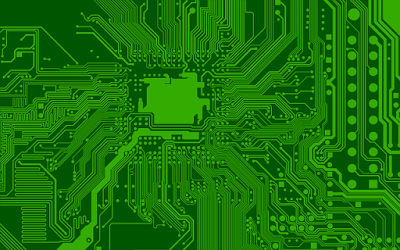PCB Designing is a crucial step in a PCB Assembly Process. The printed circuit board is the project's final step, and we use it to validate a PCB prototype.
Any electronic enthusiast should have the ability to design PCB layouts if he is a pupil, an expert in the business, or a hobbyist. The construction of a proper PCB layout is an integral part of every PCB manufacturer. In this article, we'll show you the top 8 PCB Layout Design Tips for Total Beginners.

1. Concentrate on the Sizing of Traces
We should always keep the copper traces in mind while designing a Quick-Turn PCB Assembly! To manage a PCB trace’s resistance, we most commonly use weight, thickness, and width. Since you can't alter copper's physical properties, concentrate on the trace scale, which you can monitor.
To decide how thick and wide the traces should be for your use, use a PCB trace width calculator. Aim for a 5-degree Celsius increase in temperature. Always aim to use larger traces if you’ve got additional space on the surface!
It's also worth noting that traces on the exterior layers can cool down faster if the inner layers’ heat has to pass through copper layers before being done.
The simplest PCB Fabrication boards are those with copper tracks or interconnect on just one of their surfaces in this regard. One-layer PCBs are what they're called.
2. Build Small Loops
Small loops, incredibly high-frequency loops, should be kept to a minimum. Inductance and resistance are smaller in small loops. Inductance is further reduced by placing loops over a ground plane. Also, any PCB Prototype Manufacturer needs to create smaller loops as small loops minimize high-frequency voltage spikes caused by wide loops.
Small loops often minimize the sum of external signals that are experimentally coupled into the node or broadcast from the node. If you're building an antenna, this is what you want. For op-amp circuits, keep the loops short to avoid noise from being combined into the circuit.
3. Allow Space Between Copper Traces
To avoid shock risks in PCB Fabrication, generally, PCB manufacturers leave enough space between copper traces and fills. Since a solder mark isn't necessarily a reliable conductor, make sure there's ample room between them.
4. Placement of the Decoupling Capacitor
To maximize decoupling performance in PCB Prototype, place decoupling capacitors as close as possible to the integrated circuits’ power and ground pins.
Stray inductance is introduced as capacitors are positioned farther apart. Inductance is reduced by using several vias from the capacitor's hook to a ground plane.
5. Keep Heat-Sensitive Components Away!
Heat-sensitive components of the Quick-Turn PCB Assembly should be kept separate from heat-generating components. Thermocouples and electrolytic capacitors are two examples of heat-sensitive materials.
Placing thermocouples near heat sources can cause temperature readings to be inaccurate.
Electrolytic capacitors' working life will be reduced if they are mounted near heat-generating components.
Bridge rectifiers, diodes, MOSFETs, inductors, and resistors are examples of heat-generating components. The amount of heat produced is determined by the amount of current flowing through the components.
6. Layout Ground
The layout ground in PCB Fabrication is not an ideal conductor, according to the rule of thumb. Make sure that all disruptive grounds are redirected away from any signals that require silence.
Build ground traces that are wide enough to hold the incoming currents. The impedance is reduced by placing the ground plane immediately under the signal traces.
7. Making the Final Production Files Every Time
When you're able to move on to the Quick-Turn PCB Assembly process, finish the final layout.
Make sure that all details about product procurement, assembly sketches, and Gerber files are correctly recorded. Remember that you're making a circuit board, and the success of the board is solely dependent on the production paperwork you make.
8. Thermal Vias
Heat can be transferred from one side of a PCB to the other using vias. This is particularly useful when a PCB is mounted on a heatsink on a chassis with additional heat dissipation capabilities. Heat is transferred more effectively via large vias than via small vias.
Many vias transfer heat more effectively than a single via, lowering component operating temperatures. Lower operating temperatures help better efficiency.
Final Thoughts!
These were some of the tips to design your PCB Prototype Layout if you are a beginner! Now, you can develop your PCB layout designing skills by adopting the tips mentioned above. PCBGOGO is one of the skilled PCB manufacturers for all your needs for PCB-related issues.





www.raypcb.com
ReplyDelete"This guide on PCB layout designing is perfect for beginners! It covers essential tips, from component placement to routing techniques, ensuring a smooth design process. The explanations are clear, practical, and easy to follow. A must-read for anyone starting with PCB design. Highly recommended for beginners!"
ReplyDelete